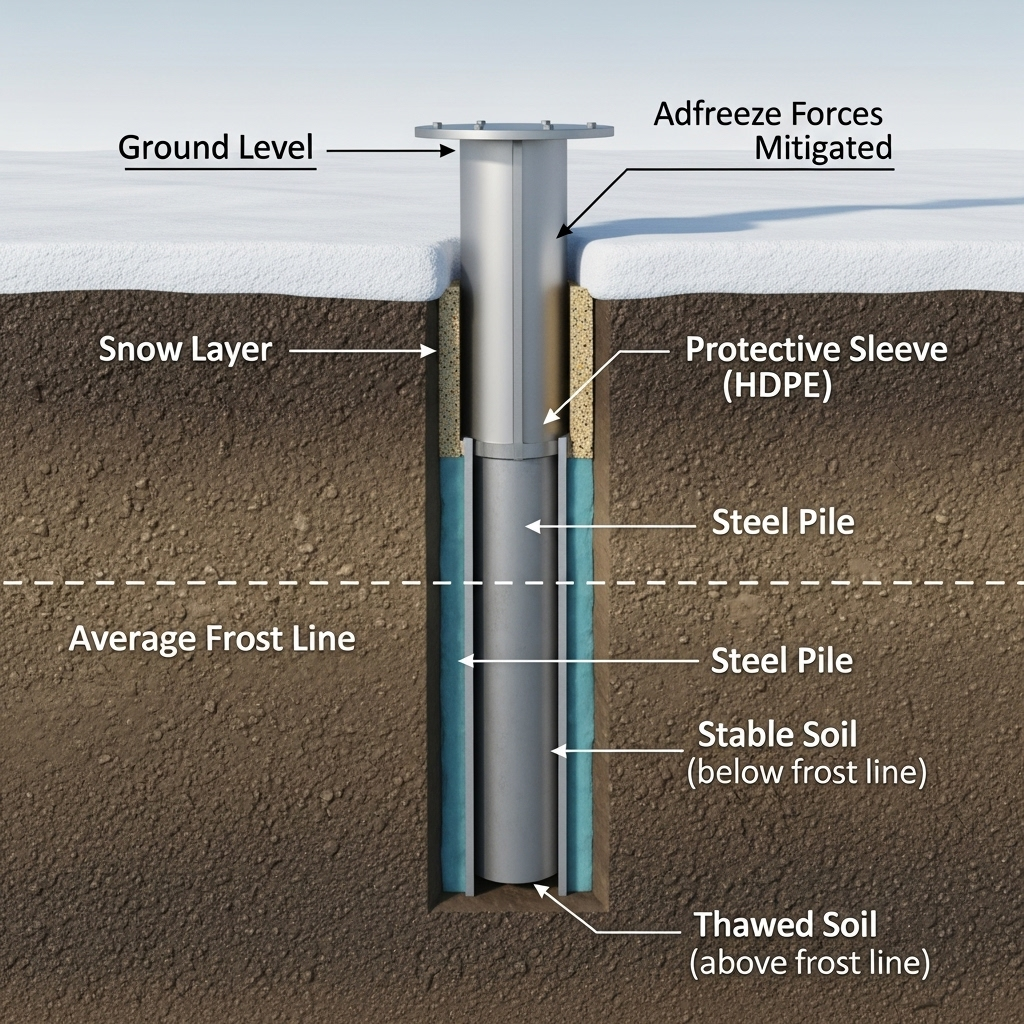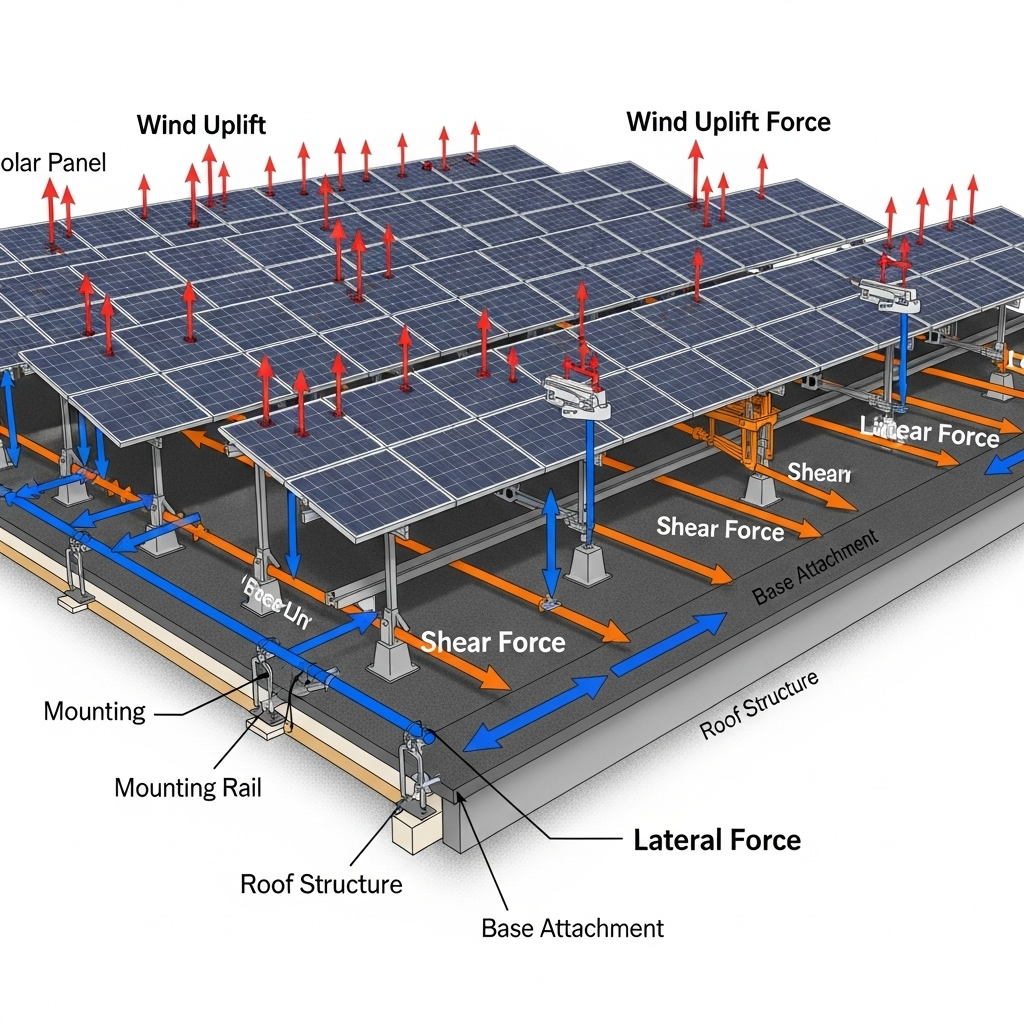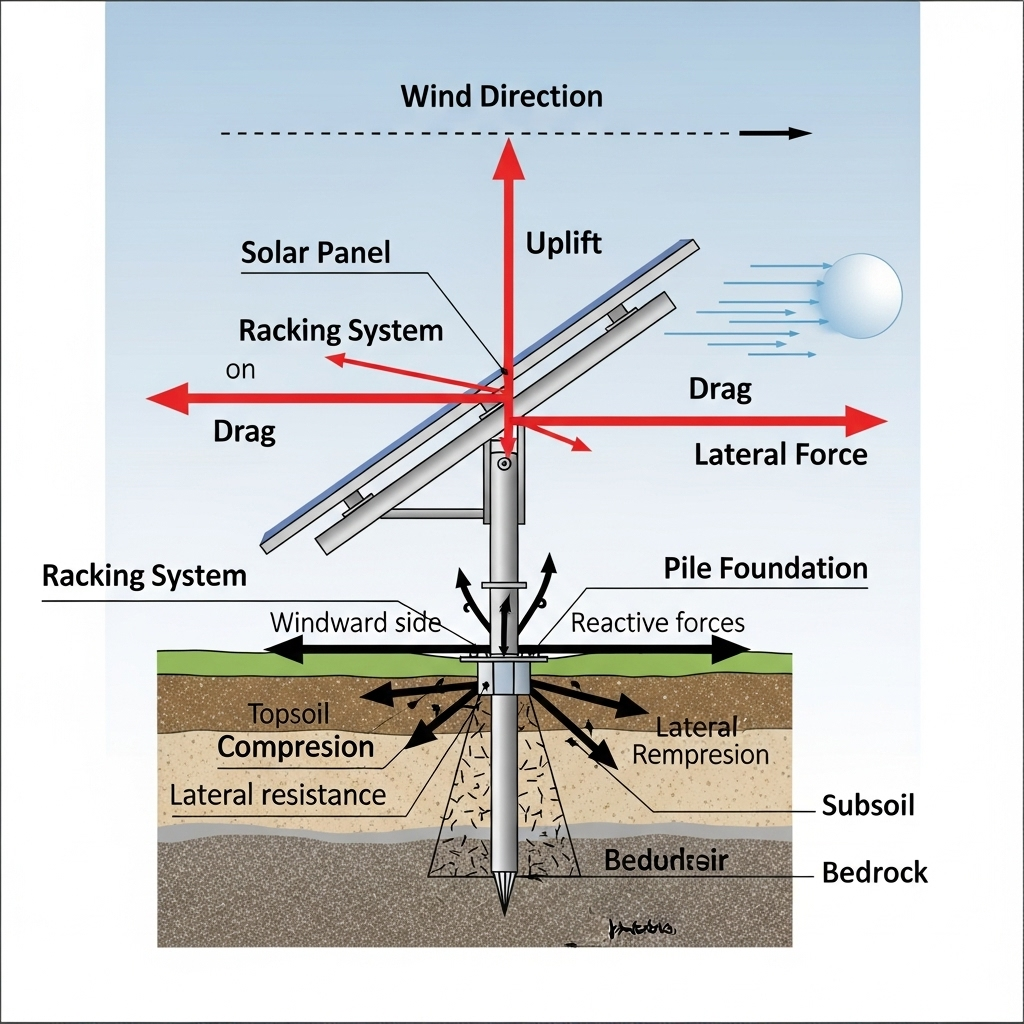Ground-mounted solar arrays represent a significant investment in clean energy. While panels and inverters get much of the attention, the foundation is what guarantees decades of reliable performance. In colder climates, a hidden threat lurks beneath the soil: frost heave. This natural phenomenon can silently compromise the structural integrity of an entire solar field, leading to costly repairs and lost energy production. Understanding and preventing it is critical for project success.
Understanding the Mechanics of Frost Heave
Frost heave is the upward swelling of soil during freezing conditions. It happens when three specific elements are present: freezing temperatures, a supply of water, and frost-susceptible soil. When water in the soil freezes, it expands. More critically, it can draw additional water from unfrozen areas below, forming layers of ice called ice lenses. These lenses grow and exert powerful upward pressure on anything above them, including the foundations of your solar array.
How Frost Heave Impacts Solar Foundations
The force generated by frost heave is immense and can easily lift solar piles out of the ground. The primary issue is often differential movement, where some piles are lifted more than others. This uneven displacement twists and distorts the racking structure. According to a report from the International Renewable Energy Agency, the direct consequence for PV systems can be structural distortion of the mounting rack. In severe cases, this can result in the deformation and even cracking of PV modules, as detailed in the publication Quality infrastructure for renewables facing extreme weather. This stress compromises not only energy generation but also the physical safety of the installation.
Identifying Frost-Susceptible Soils
Not all soils are created equal in their susceptibility to frost heave. Soils with a high percentage of fine particles, such as silts and fine sands, are the most problematic. These soils have a pore structure that facilitates the capillary action needed to draw water up to the freezing front, feeding the growth of ice lenses. Coarse-grained soils like gravel and coarse sands are far less susceptible because they drain easily and inhibit this water movement. A thorough geotechnical investigation is the first step in any ground-mount project in a cold region.

Key Strategies for Frost Heave Mitigation
Preventing frost heave damage is about disrupting one of the three core conditions required for it to occur. Since you cannot change the temperature, mitigation focuses on foundation design and controlling water. A robust pile foundation design is the most effective defense.
Extend Piles Below the Frost Line
The most fundamental rule in cold-climate construction is to place foundations below the frost line. The frost line is the depth to which the ground freezes in a specific geographic location. By driving solar ground piles deep enough so their base is in permanently unfrozen soil, you anchor them against the upward forces. The soil gripping the pile below the frost line provides resistance that counteracts the lifting pressure acting on the upper portion of the pile.
Reduce Adfreeze Bond Strength
Adfreeze is the force that occurs when frozen soil bonds directly to the surface of the pile. This bond can be strong enough to pull the pile upward as the soil heaves. You can reduce this grip in several ways:
- Sleeves: Placing a plastic or PVC sleeve around the pile in the active frost zone creates a slip plane. The soil heaves and slides up the sleeve, but the pile itself remains stationary.
- Coatings: Applying a layer of bitumen or another friction-reducing coating to the pile serves a similar purpose, weakening the bond between the frozen soil and the steel.
Improve Local Soil and Drainage
If the native soil is highly susceptible to frost heave, you can modify the area directly around the piles. Excavating the soil around the pile and backfilling with a non-frost-susceptible material, such as clean gravel or coarse sand, achieves two goals. First, it removes the problematic soil. Second, it creates a well-drained column that prevents water from accumulating near the pile, effectively starving the frost heave process of its fuel.
Advanced Pile Foundation Design and Long-Term Stability
For particularly challenging sites, a combination of strategies may be necessary. The goal is to create a resilient foundation system that ensures solar tracker stability and protects the asset for its entire operational life.
Comparing Mitigation Techniques
Choosing the right approach depends on soil conditions, frost depth, and project budget. Each method offers a different balance of cost and effectiveness.
| Mitigation Strategy | Relative Cost | Effectiveness | Best Suited For |
|---|---|---|---|
| Extend Piles Below Frost Line | Moderate | Very High | All frost-prone sites; the standard practice. |
| Use of Sleeves/Coatings | Low to Moderate | High | Sites with highly adhesive soils (e.g., silts). |
| Soil Replacement/Backfill | High | Very High | Sites with extremely poor soil conditions. |
| Subsurface Drainage | Moderate to High | High | Areas with a high water table or poor surface drainage. |
The Importance of Monitoring
Even with a robust design, periodic monitoring is a good practice. Visual inspections after deep freezes or spring thaws can help identify any early signs of movement. Ensuring the foundation remains stable is paramount because it directly impacts the efficiency and output of the entire system. A stable platform allows trackers to function correctly and panels to maintain their optimal orientation, which is a core principle for achieving high yields as outlined in comprehensive guides on solar storage performance. Any instability can degrade performance long before catastrophic failure occurs.
Securing Your Solar Asset
Mitigating frost heave is not just about preventing structural damage; it is about ensuring the long-term bankability and performance of your solar project. By investing in a proper geotechnical analysis and implementing sound pile foundation design from the outset, you protect your solar ground piles from the powerful forces of nature. This proactive approach ensures that your solar installation remains a stable, reliable, and productive source of clean energy for decades.
Disclaimer: This article provides general information and is not a substitute for professional engineering advice. Always consult with a qualified geotechnical engineer for site-specific foundation design.
Frequently Asked Questions
What is the frost line and why is it important for solar ground piles?
The frost line, or frost depth, is the maximum depth at which groundwater in soil is expected to freeze during the winter. It is critical for solar ground piles because any part of the foundation within this zone is subject to the powerful upward forces of frost heave. To prevent lifting, piles must be anchored below this depth in stable, unfrozen soil.
Can all types of soil experience frost heave?
No, not all soils are equally susceptible. Frost heave is most severe in fine-grained soils like silts and some clays, which can draw water upward to form ice lenses. Coarse-grained soils, such as gravel and clean sands, drain well and are generally considered non-frost-susceptible, making them ideal for backfill.
Is frost heave mitigation for solar foundations expensive?
The cost of mitigation is an upfront investment that prevents much larger expenses down the line. While driving piles deeper or improving soil conditions adds to the initial project cost, it is far less expensive than repairing a damaged array, replacing cracked modules, and losing revenue from system downtime. The cost varies based on the specific methods used and the severity of the site conditions.
How often should I inspect my ground-mount system for frost heave damage?
It is good practice to conduct visual inspections of the array at least once a year, preferably after the spring thaw when the ground has settled. Look for any signs of unevenness in the rows of panels, distorted racking, or visible lifting of the piles. Early detection allows for corrective action before significant damage occurs.





Leave a comment
All comments are moderated before being published.
This site is protected by hCaptcha and the hCaptcha Privacy Policy and Terms of Service apply.